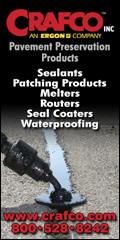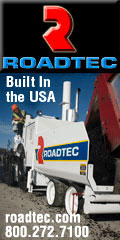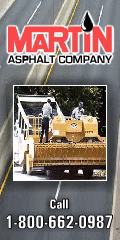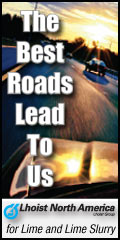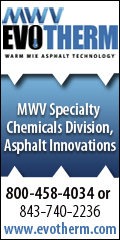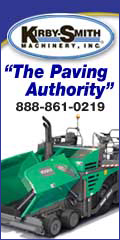| Wednesday, September 05, 2012 | ||
 |
 |
 |
| Past Issues | www.texasasphalt.org | Printer-Friendly | Subscribe | Advertise |
NCAT News...Warm-mix and RAP: A Winning Combination
We would like to thank our partners at The National Center for Asphalt Technology (NCAT) at Auburn University for the following article: Warm-mix and RAP: A Winning Combination Using warm-mix asphalt (WMA) technologies in recycled asphalt pavement (RAP) mixes is a win-win scenario in every respect. The cost benefits are evident—reduced material costs and less fuel usage. Plus, the enhanced workability of warm-mix can facilitate using increased RAP contents, which translates into even greater cost savings. With sustainable advantages such as conserving natural resources and reducing the emission of greenhouse gases, the WMA/RAP combination also scores high in terms of environmental stewardship.
Beyond economic and environmental benefits, WMA and RAP together create a synergistic mixture. "They go together, like peanut butter and jelly or macaroni and cheese," says Dr. Randy West, NCAT director. "We should be using them together whenever we can."
Combining WMA and RAP offers potential improvements in pavement performance compared to using either alone. AASHTO M320 recommends the use of a softer virgin binder grade for moderate and high (greater than 25 percent) RAP contents. Adding warm-mix is the perfect solution, as lower mixing temperatures result in less binder aging during production and consequently, a softer binder. A RAP mix produced at warm-mix temperatures should then have ample stiffness to resist rutting, as well as sufficient viscoelastic behavior to resist cracking.
Plant operations are also improved when WMA and RAP are used together. Plant concerns associated with warm-mix include possible incomplete aggregate drying in the drum. Also, when the gas temperature in the baghouse is reduced below the vapor point of water, muddling of the bags can occur. However, these concerns are alleviated with the use of RAP, since aggregate is superheated to compensate for adding RAP at ambient temperatures. Producing RAP mixes at warm-mix temperatures also eliminates blue smoke emissions. WMA/RAP Field Performance at the Test Track As part of the 2009 Group Experiment at the NCAT Pavement Test Track, two full-depth 50 percent RAP sections were placed—one produced as WMA using the water-injection foaming method and the other as HMA. Each 7-inch structural section included 50 percent fractionated RAP in all three lifts of the asphalt cross-section. Each section used PG 67-22 virgin binder, whereas the control incorporated PG 76-22 binder in the surface and intermediate lifts and all-virgin materials throughout.
After the application of 10 million equivalent standard axle loads (ESALs), the high-RAP WMA section performed as well as the control. No cracking was observed in any of the three sections and all three exhibited excellent rut resistance. As shown in Table 1, less rutting was seen in the high-RAP WMA section than the control. Table 1 also shows that changes in texture were very low for the high-RAP and control sections, indicating excellent durability.
 Two all-virgin WMA sections, one produced using the water-injection foaming process and one with a chemical additive, were also tested in the 2009 Group Experiment at the Test Track. While the rutting performance of both WMA sections was satisfactory, the rutting performance of the 50 percent RAP WMA section was significantly better.
Deflection testing confirmed that the 50 percent RAP sections (both HMA and WMA) were stiffer than the control. As a result of this increased stiffness, measured strain levels were lower in the high-RAP sections than in the control, particularly at warmer temperatures. Laboratory fatigue testing also indicated that the endurance limit for the RAP-WMA section was significantly higher than the control.
As demonstrated at the NCAT Pavement Test Track, WMA and RAP together create a synergistic mixture that offers improvements in pavement performance and plant operations, as well as significant cost savings and environmental benefits. WMA/RAP is simply a winning combination.
(To view the original article on NCAT's website, please click here) National Center for Asphalt Technology |
Asphalt: Smooth | Durable | Quiet | Safe

